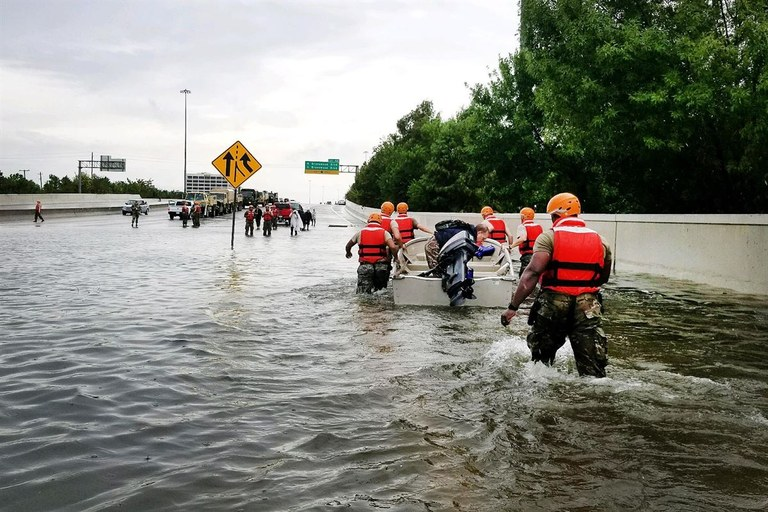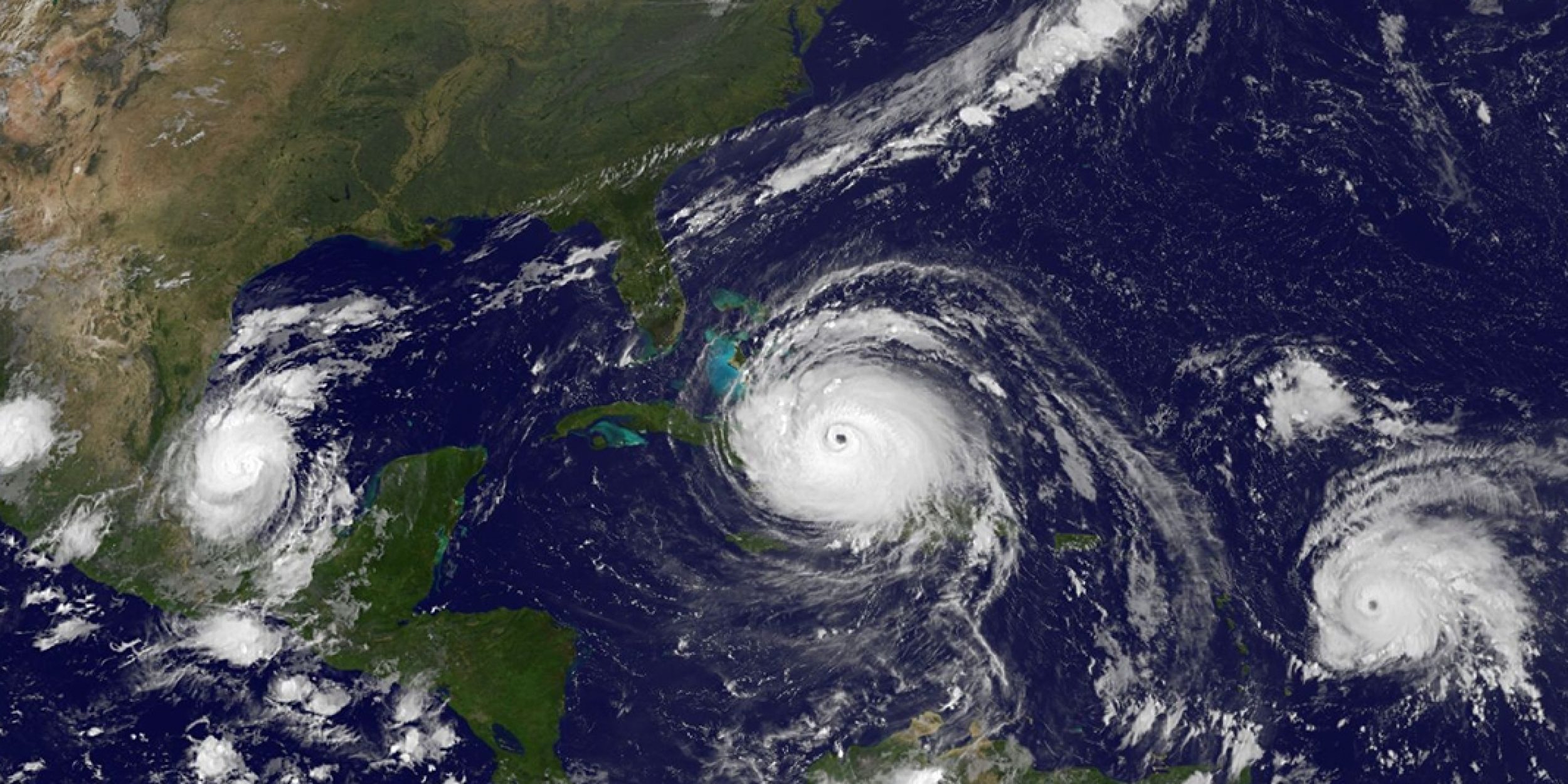Image from NOAA satellite of Hurricanes Katia, Irma and Tropical Storm Jose (from left to right) on September 8, 2017.
Heavy and widespread rainfall during landfalling tropical cyclones can cause severe damage, large financial losses, and the loss of life. In 2017 and 2018 alone, U.S. landfalling hurricanes contributed to more than 3,000 deaths and $300 billion in damages. In a new Geophysical Research Letters article, authors Danielle Touma, Samantha Stevenson, Daniel Horton, Noah Diffenbaugh, and MAPP-funded PI Suzana Camargo research the differences in rainfall intensity and physical extent of rainfall along tracks of tropical cyclones of different intensities. All tracks of tropical cyclones that made landfall in the southern and eastern US during the 20th century were analyzed.
From this research, it was found that major hurricanes that have weakened to tropical storms contributed to heavier rainfall over land during the most recent six decades compared to the first six decades of the 20th century. In addition, after landfall occurs, widespread rainfall was also associated with major hurricanes that have weakened to tropical storms.

Texas National Guard arrives in Houston, Texas to aid residents in heavily flooded areas from Hurricane Harvey, Aug. 27, 2017. Credit: 1st Lt. Zachary Wes.
To understand these changes in flooding risk to coastal communities, this research study, in part, draws on NOAA’s long-term climate monitoring datasets, including those that have been updated and improved through funding from the Climate Observations and Monitoring Program (e.g. NCEI’s Global Historical Climatology Network (GHCN) and the National Hurricane Center’s (NHC) HURricane DATabase (HURDAT2).
These results suggest that as major hurricanes make landfall, their weakening intensities could have an increased likelihood of more localized and heavy rainfall intensities, increasing the risk of flash flooding and flood devastation such as witnessed during events like Hurricanes Harvey and Florence.
———————————————————————————————–
About MAPP
The Modeling, Analysis, Predictions, and Projections (MAPP) Program is a competitive research program in NOAA Research’s Climate Program Office. MAPP’s mission is to enhance the Nation’s and NOAA’s capability to understand, predict, and project variability and long-term changes in Earth’s system and mitigate human and economic impacts. To achieve its mission, MAPP supports foundational research, transition of research to applications, and engagement across other parts of NOAA, among partner agencies, and with the external research community. MAPP plays a crucial role in enabling national preparedness for extreme events like drought and longer-term climate changes.
For more information, please visit www.cpo.noaa.gov/MAPP.



